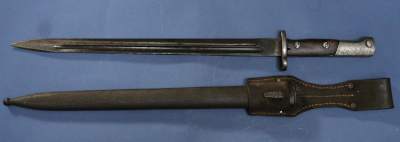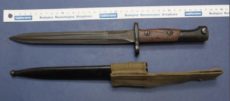Belgium
The Belgian military in the 19th and first half of the 20th century was relatively small but well-trained and equipped. Belgium was a neutral country during this period, but its military played a vital role in defending its neutrality and independence.
From bayonets collector point of view we should track Belgium histroy from the end of XVIII century. During and short after French Revolutionary wars it was a part of France. In 1814 the Congress of Vienna created United Kingdom of Netherlands. The southern Netherlands rebelled during so called Belgian Revolution, which established Kingdom of Belgium.
In the 19th century, Belgium underwent a period of rapid economic growth and industrialization. This led to a corresponding increase in the size and strength of the Belgian military. In 1830, the Belgian army numbered around 50,000 men. By the end of the century, this number had increased to over 100,000 men.
Region of Liege became a center for metallurgy and weapon industry, manufacturing for Belgian army as well as tremendous export, especially in second part of XIX century.
The Belgian military was also modernized during this period. New weapons and technologies were introduced, and the army was trained in the latest military tactics. In addition, the Belgian government built a network of forts and fortifications along the country’s borders.
Belgium’s neutrality was tested for the first time in 1914, when Germany invaded Belgium in the early stages of World War I. The Belgian army resisted the German invasion for several weeks, but was eventually forced to retreat. Belgium remained occupied by Germany for the remainder of the war.
After World War I, Belgium rebuilt its military and continued to maintain a strong neutral position. However, in 1940, Germany invaded Belgium again. This time, the Belgian army was quickly defeated and the country was once again occupied.
Belgium remained occupied by Germany until 1944, when it was liberated by Allied forces. After the war, Belgium joined NATO and became a founding member of the European Union.
The Belgian military played a significant role in World War II, despite the country’s small size. Belgian forces participated in the liberation of France and the Netherlands, and also served in the Korean War.
In the second half of the 20th century, the Belgian military focused on peacekeeping and humanitarian missions. Belgian forces have participated in UN peacekeeping missions in Somalia, Rwanda, and the Balkans.
Today, the Belgian military is a modern and well-trained force. It is responsible for defending Belgium’s security and interests both at home and abroad.
The Belgian military in the 19th and first half of the 20th century was relatively small but well-trained and equipped. Belgium was a neutral country during this period, but its military played a vital role in defending its neutrality and independence.
From bayonets collector point of view we should track Belgium histroy from the end of XVIII century. During and short after French Revolutionary wars it was a part of France. In 1814 the Congress of Vienna created United Kingdom of Netherlands. The southern Netherlands rebelled during so called Belgian Revolution, which established Kingdom of Belgium.
In the 19th century, Belgium underwent a period of rapid economic growth and industrialization. This led to a corresponding increase in the size and strength of the Belgian military. In 1830, the Belgian army numbered around 50,000 men. By the end of the century, this number had increased to over 100,000 men.
Region of Liege became a center for metallurgy and weapon industry, manufacturing for Belgian army as well as tremendous export, especially in second part of XIX century.
The Belgian military was also modernized during this period. New weapons and technologies were introduced, and the army was trained in the latest military tactics. In addition, the Belgian government built a network of forts and fortifications along the country’s borders.
Belgium’s neutrality was tested for the first time in 1914, when Germany invaded Belgium in the early stages of World War I. The Belgian army resisted the German invasion for several weeks, but was eventually forced to retreat. Belgium remained occupied by Germany for the remainder of the war.
After World War I, Belgium rebuilt its military and continued to maintain a strong neutral position. However, in 1940, Germany invaded Belgium again. This time, the Belgian army was quickly defeated and the country was once again occupied.
Belgium remained occupied by Germany until 1944, when it was liberated by Allied forces. After the war, Belgium joined NATO and became a founding member of the European Union.
The Belgian military played a significant role in World War II, despite the country’s small size. Belgian forces participated in the liberation of France and the Netherlands, and also served in the Korean War.
In the second half of the 20th century, the Belgian military focused on peacekeeping and humanitarian missions. Belgian forces have participated in UN peacekeeping missions in Somalia, Rwanda, and the Balkans.
Today, the Belgian military is a modern and well-trained force. It is responsible for defending Belgium’s security and interests both at home and abroad.
Showing 17–32 of 33 results













